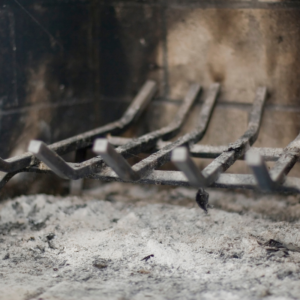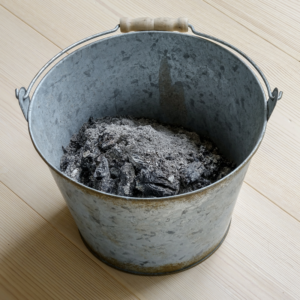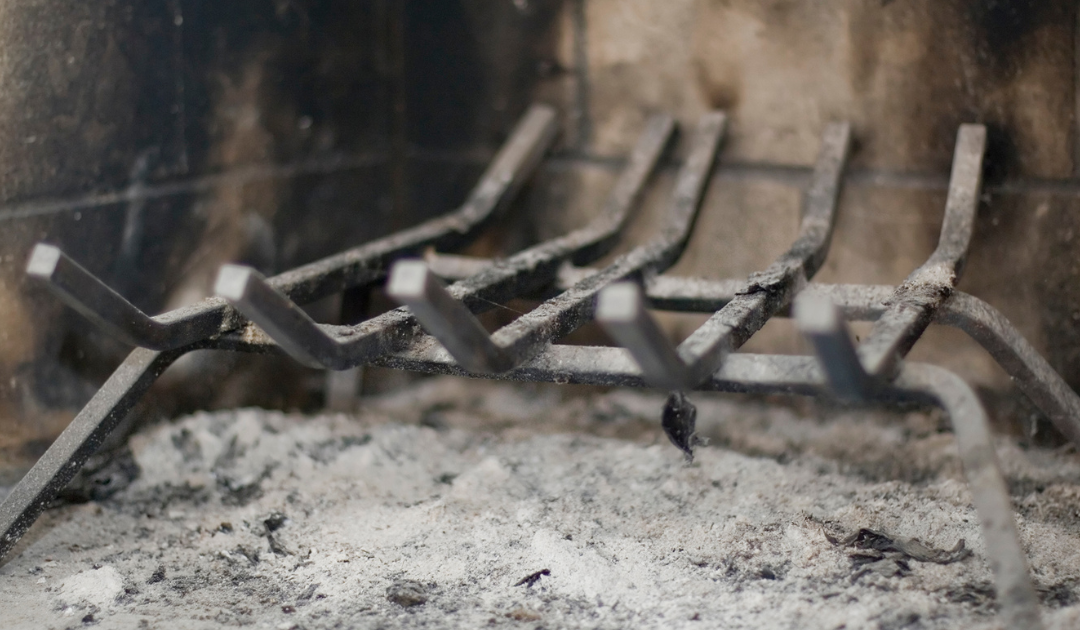Where there’s a wood-burning fire, there will be ash. Ash may seem all-around messy, but it actually offers many advantages – both while it’s in your fireplace and after you remove it.
So don’t let the joy of your fire be dampened by the thought of the ash it’s leaving behind. Clean up is fairly simple with a little know-how – and you may even be able to put that byproduct to use!
Should I Remove All My Fireplace Ash?
 Before you clear out your entire fireplace, know that ashes can actually serve a purpose in your fireplace. Ashes insulate the brick of your firebox, meaning that when you start a fire you won’t waste initial energy heating the surrounding area before the fire can really go. This will help your logs burn more completely and efficiently, with greater heat and less smokiness.
Before you clear out your entire fireplace, know that ashes can actually serve a purpose in your fireplace. Ashes insulate the brick of your firebox, meaning that when you start a fire you won’t waste initial energy heating the surrounding area before the fire can really go. This will help your logs burn more completely and efficiently, with greater heat and less smokiness.
That said, if ash is too thick in your stove or fireplace, it’ll diminish airflow to your logs, and you’ll start to notice smokier fires that don’t burn as hot. If this sounds familiar, it’s time to empty some ash. A strangled, smoky fire not only affects ambiance, but can cause creosote to build up in your chimney flue too.
Long story short – you shouldn’t let ash levels get too high, but keeping a small layer during the heating season can make it less difficult to get a good, hot fire going right away. We suggest leaving an inch or two in the bottom of your fireplace or wood stove to aid with future fires, offer a blanket of insulation, and offer some more protection for your firebox floor.
Safely Scooping Your Ash
When you do scoop your ash, use a sturdy metal shovel designed for the purpose. Since live coals may be embedded in ashes, even if they appear cool, it’s ideal to wait 24 hours after your last fire (at the very minimum) to minimize the chance of burns.
Other tips?
- Never use a vacuum or potentially flammable tool to remove ashes. Rather, always treat ashes in your fireplace as though they’re hot.
- Protect your hands with fireproof gloves, and if you do come across live embers, gently scoot them toward the back of the firebox with your shovel.
- Scoop ash into a fireproof container with a snugly fitting lid.
- Leave about an inch of ash behind to aid in the combustion process of your next fire.
- Store your ash bucket outside of your home on a noncombustible surface, well away from your house and other structures.
- When you’re confident in the coolness of the ashes, store and use them for whatever purposes suit your needs!
Uses for Your Wood Ash
 Ashes from your fireplace have many potential uses. They can be added to compost, where they’ll contribute potassium and help neutralize acidity levels. If you have acidic soil, a measure of wood ash can be used as a solid amendment to raise its pH. Another garden use is to deter slugs and snails, who will avoid traveling over it. Just think – your winter fires can help nourish your spring flowers and keep your summer vegetables safe!
Ashes from your fireplace have many potential uses. They can be added to compost, where they’ll contribute potassium and help neutralize acidity levels. If you have acidic soil, a measure of wood ash can be used as a solid amendment to raise its pH. Another garden use is to deter slugs and snails, who will avoid traveling over it. Just think – your winter fires can help nourish your spring flowers and keep your summer vegetables safe!
While it may not seem like it when you’re scooping them out of the firebox, ashes are actually useful in cleaning, as well, thanks to their absorbent and mildly abrasive qualities. Let ash sit on any oil stains on your concrete or asphalt for several hours, then sweep it away – you’ll likely find the stain reduced or even completely removed. Ash can also remove odors and excess humidity from a dank room or your refrigerator. Or, mix ash with water and use it as a paste to polish silver or scrub your glass fireplace doors.
Another practical use of wood ash is in giving you some grip this winter. You can apply ash topically to sidewalks and driveways in icy conditions to increase traction.
See? You’ve got all kinds of options – and these are only a handful of them.
End of the Season?
Is it the end of your burn season? Then, you’ll want to clear out all of your ashes. At this point, you won’t be using your fireplace for a while and won’t be needing that layer to aid future fires. As a matter of fact, it can be downright detrimental to your fireplace system if left.
Wood ashes can draw moisture. This is what makes them a foe of garden snails and slugs and a friend to your refrigerator. But this ability to pull moisture can make them extremely damaging to your masonry and other fireplace components if left to set through the warmer months.
Combined with moisture, ash can cause corrosion and deterioration. So once you’ve lit that last cozy fire of the season, clear them out til next fall.
Need Advice or Chimney Services? Call Our Experts
Have you noticed some deterioration to any component of your fireplace or stove, or do you have questions about chimney care? We’re happy to take a look, assess the situation, and answer your questions.
While you, as the customer, take care of day-to-day use and enjoyment of your fireplace, we do our part by providing top-notch, friendly, knowledgeable service. Annual inspections and routine chimney sweepings are an important line of defense against system breakdowns and hazards, so we’re proud to put our years of expertise at your disposal to help keep your family safer and warmer.
Let’s get started. Call us at 631-738-0005 or reach out online today.


Recent Comments